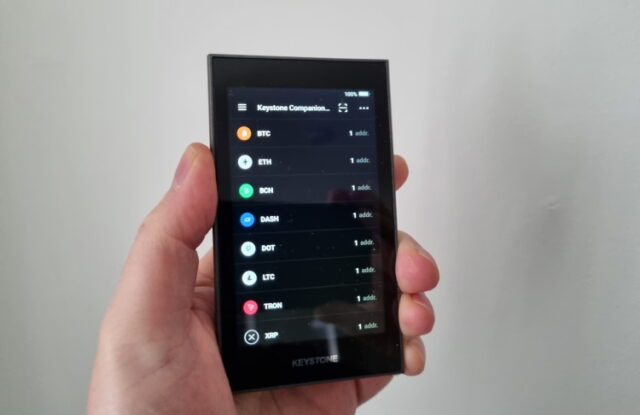Cryptocurrencies, especially Bitcoin, Ethereum, and their peers, enjoy immense popularity worldwide, and many still consider mining as one of the entry points into this digital space. In the early days, a simple home computer was enough to mine a small amount of crypto, but the situation today is very different. Market competition has intensified, hardware requirements have grown, energy prices have risen, and returns are generally on a downward trend.
But in 2025, is it still worth mining cryptocurrencies at home? Under what conditions can the activity be profitable? What equipment, power supply, and software skills are required? In this article, we’ll take a close look at how crypto mining works, the economic realities, and the technical, financial, and legal aspects involved.
How crypto mining works — in brief
In cryptocurrency mining, miners contribute their computing power to the network to solve complex mathematical problems. This helps validate transactions and maintain the blockchain. In return, they receive newly issued coins (e.g., bitcoin) and a portion of the transaction fees.
Proof of Work vs. Proof of Stake
-
Proof of Work (PoW): The system used by Bitcoin, requiring significant hardware performance.
-
Proof of Stake (PoS): Ethereum switched to this in 2022; it’s much more energy-efficient and doesn’t require traditional mining, relying instead on staking coins to validate transactions.
The key difference is that PoW demands large amounts of energy and computing power, while in PoS, the “miner” (more accurately, validator) locks up funds to participate in transaction validation. PoS is more eco-friendly but is quite different from traditional mining.
Which cryptocurrencies can still be mined at home?
While Bitcoin mining now takes place almost exclusively on industrial-scale farms, several alternative cryptocurrencies (altcoins) can still be mined at home:
-
Ravencoin (RVN)
-
Monero (XMR)
-
Ergo (ERG)
-
Dogecoin (DOGE) – mineable alongside Litecoin
Competition for these coins is lower, and some algorithms are particularly suited to GPU mining. Each cryptocurrency uses a different algorithm, so hardware choice matters. For example, Monero is a well-known CPU-friendly coin, while Ravencoin is optimized for GPU mining.
Hardware requirements for home mining
CPU mining
-
Suitable for coins like Monero
-
Relatively low returns, but requires smaller investment
GPU mining
-
The most common form of home mining
-
Rigs with multiple GPUs, e.g., Nvidia RTX 3060/3070/3080 or AMD Radeon RX series
-
Requires good airflow, cooling, and stable power supply
ASIC mining
-
Machines designed for a specific algorithm (e.g., Bitmain Antminer S19)
-
Extremely high performance, but noisy, generates heat, and requires industrial conditions
Prices vary widely: a mid-range GPU can cost 250,000–400,000 HUF, while an ASIC machine can reach 2–5 million HUF.
Software setup
-
Mining software: NiceHash, HiveOS, PhoenixMiner, XMRig
-
Mining pools: SlushPool, 2Miners, Ethermine
-
Wallet & exchange integration: Needed for receiving payouts and converting to fiat or other crypto
Always download software from trusted sources, as malware-infected versions are common in the crypto world. Software configuration and pool selection significantly affect efficiency.
Profitability and ROI
Key factors:
-
Electricity cost (HUF/kWh)
-
Machine cost and energy efficiency (hash/W)
-
Current and projected cryptocurrency prices
-
Network difficulty
-
Payout frequency and transaction fees
Example calculation:
An 8× GPU rig with RTX 3070 cards can generate crypto worth 500–800 HUF per day, but electricity costs can be 400–600 HUF/day. This means minimal or even negative profit if electricity is expensive. Maintenance costs, potential breakdowns, and component replacements also need to be factored in. Payback time can range from 12 to 36 months.
Legal framework in Hungary
For individuals, mining income is taxable. According to the Hungarian Tax Authority (NAV):
-
Mining income is considered “income from independent activity” and subject to 15% personal income tax (SZJA) and possibly 13% social contribution tax (SZOCHO)
-
Expense deduction is possible (e.g., electricity bills, equipment)
When selling mined crypto, an additional tax liability may arise, determined under Hungary’s 2022 crypto taxation rules.
Environmental impact and sustainability
-
Crypto mining is energy-intensive, especially under PoW
-
At home, it still produces significant heat and noise
-
More projects are adopting renewable energy (e.g., solar panels) for sustainable mining
Due to climate change concerns and the growth of green technology, future miners will likely focus increasingly on energy efficiency.
Tips for beginners
-
Start small with a test setup
-
Use reliable, low-power hardware
-
Calculate ROI and expected costs carefully
-
Experiment with different coins and pools
-
Monitor market prices and mining metrics
-
Ensure adequate insurance and power outage protection
-
Join mining communities and forums for knowledge sharing
Outlook and alternatives
-
Classic mining (PoW) is in decline
-
Staking, yield farming, and DeFi offer far more energy-efficient options
-
The future of crypto mining depends on energy efficiency, decentralization, and regulation-resistant systems
The crypto space is evolving rapidly, with new opportunities constantly emerging — the metaverse, NFTs, and Web3-based projects may offer interesting alternatives to traditional mining.
Home crypto mining is increasingly being pushed out of profitable territory, mainly due to rising energy prices and increasing network difficulty. Still, as a technical challenge, hobby activity, or niche operation focusing on alternative coins, it can remain viable. Anyone starting in 2025 should perform thorough calculations, understand the legal implications, and plan for the long term. Above all, the decision should be based on detailed research, cost estimation, and risk assessment.
Image(s) used in this article are either AI-generated or sourced from royalty-free platforms like Pixabay or Pexels.
Did you enjoy this article? Buy me a coffee!






